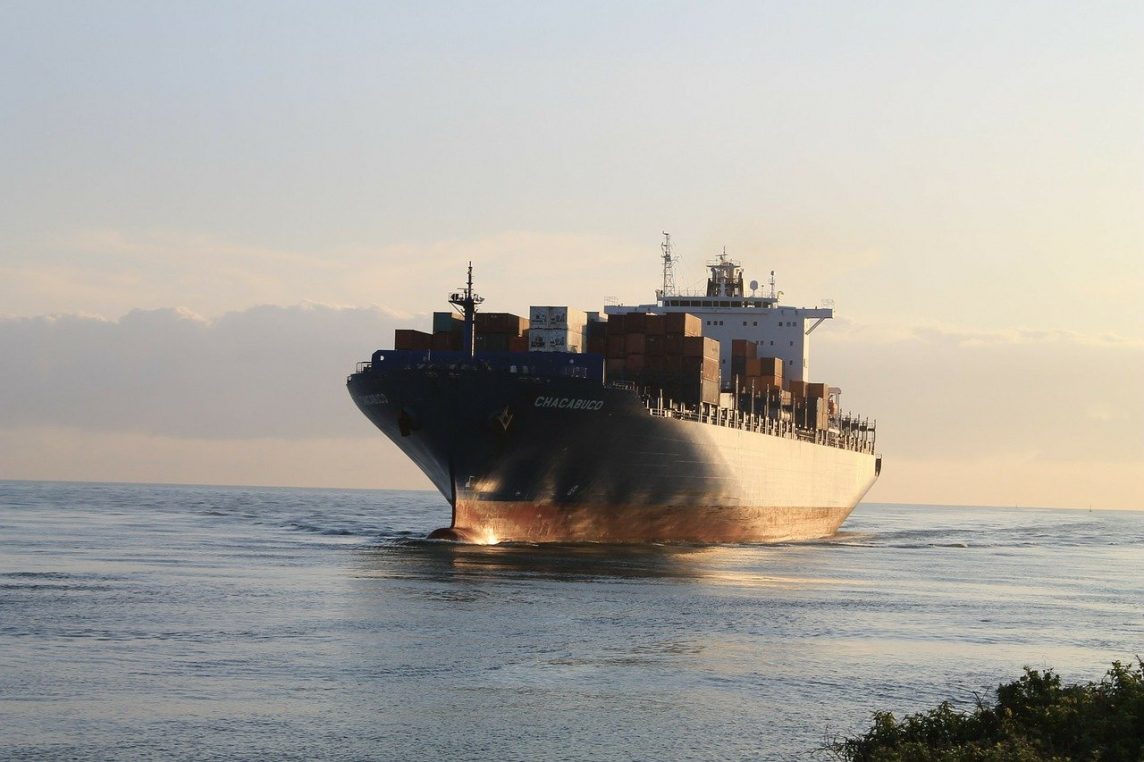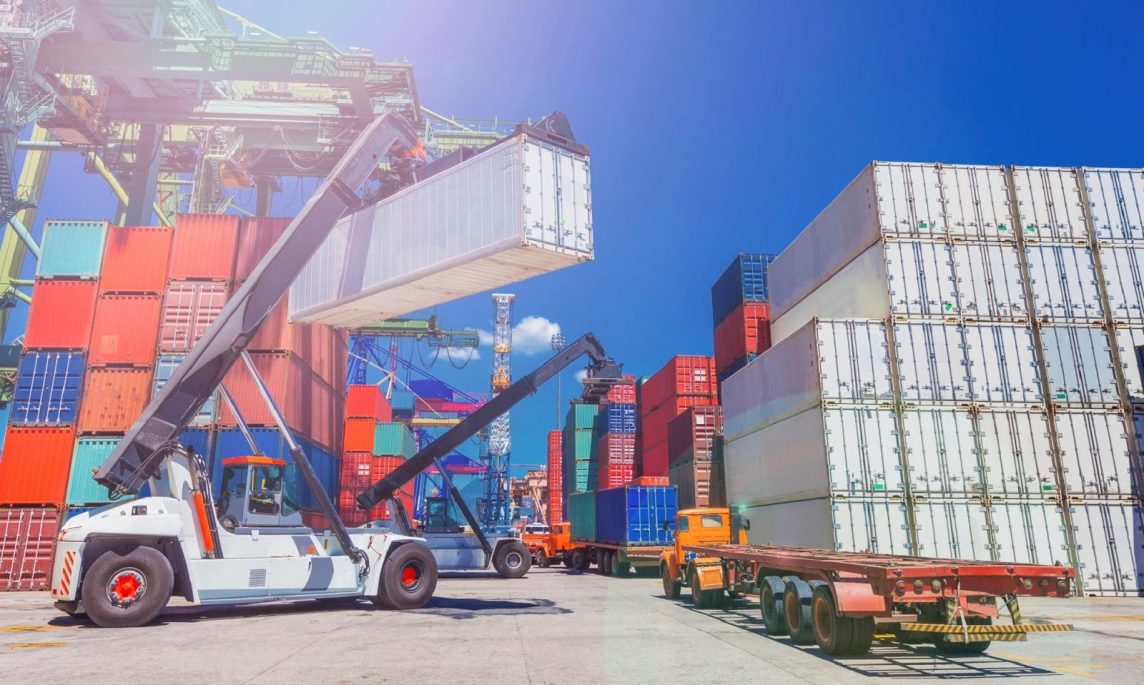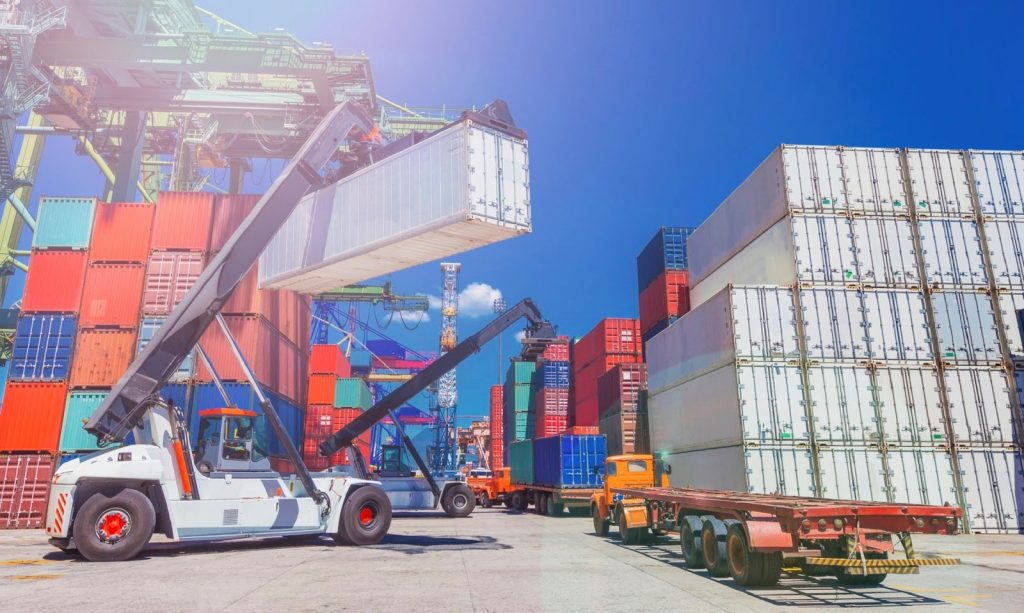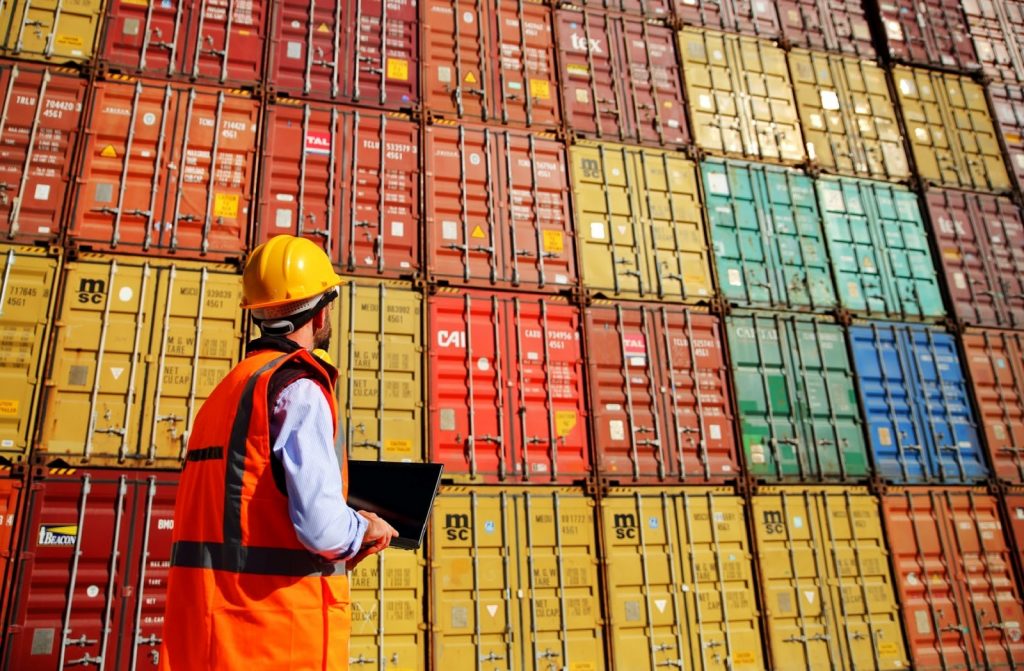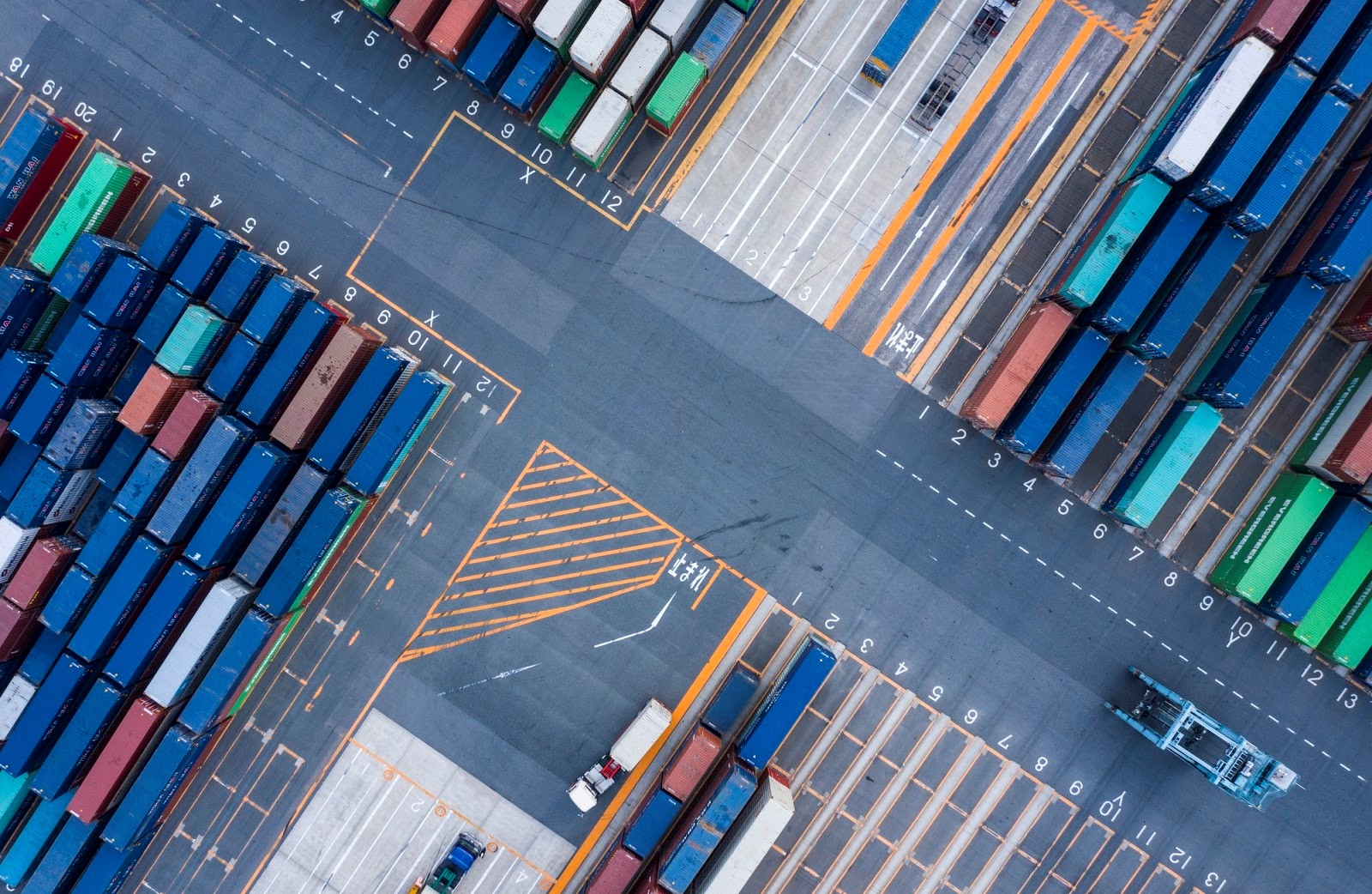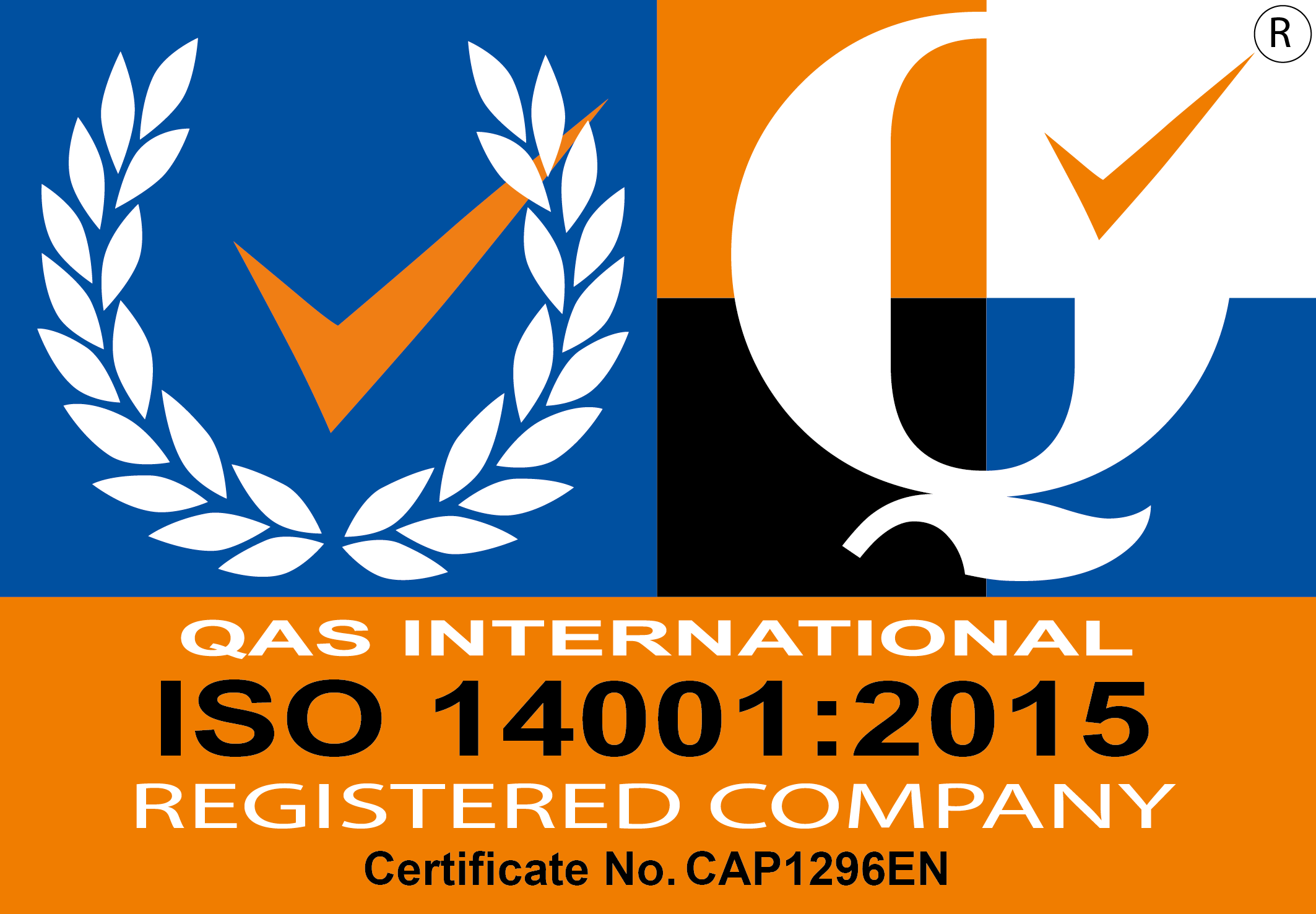The UK economy as a whole, including exports, has been badly hit by the COVID-19 pandemic. In a recent Monetary Policy Summary, the Bank of England noted that GDP is thought to have been 20 percent lower in the second financial quarter of 2020 than in the last quarter of 2019, and the Bank also predicted that economic activity would not recover to Q4 2019 levels until the end of 2021. In addition, government figures show that UK exports and imports have both declined since the pandemic struck. And with ongoing Brexit negotiations causing further uncertainty in the markets, it has undoubtedly been a turbulent year for businesses and the markets more generally.
To highlight the ongoing volatility, we’ve taken figures provided by the Office for National Statistics that reveal how the top 10 commodities being exported from the UK fared over the period from May 2019 to May 2020 and turned this data into an interactive graph.
Top trends
The graph and the table above show that there was considerable fluctuation in these commodities over the 12-month period. Motor vehicle exports were particularly badly hit by the fallout from the pandemic and the government lockdown, which was instituted on 23 March. Exports of motor vehicles dropped sharply from £3,058 million in March this year to just £698 million in April. The year-on-year fall in export activity in the sector from May 2019 to May 2020 was £2,411 million. However, between May 2020 and August 2020, activity went up by £1,151 million.
Electronic equipment also saw a steep year-on-year decline in exports, dropping from £1,801 million in May 2019 to £1,411 in May this year (with the steepest decline coming after lockdown restrictions were implemented). Mechanical appliance exports fell sharply too. These commodities registered a year-on-year decrease between May 2019 and May 2020 of £1,669 million, again with the most notable drop occurring post-lockdown. Between May 2020 and August 2020, activity fluctuated slightly, peaking at £1,703 million in July and falling again to £1,554 million in August.
Falls in consumer confidence and sales across many parts of the world have fed into this trend, as has the decrease in production caused by some factories stopping or slowing production. This issue remains ongoing. Figures from the Society of Motor Manufacturers and Traders, for example, show that just 85,696 new models left vehicle plants in the UK in July, which is 22,543 lower than the total from July 2019.
Not all industries have been negatively impacted though. For example, exports of pharmaceutical products have remained fairly high and stable throughout the year. Despite a temporary government restriction on exports covering 80 key medicines due to the pandemic, overseas sales of pharmaceutical products have steadied and risen. These goods recorded a year-on-year increase in exports of £181 million between May 2019 and May 2020. In part, this may be due to the fact that many companies are searching for vaccines and treatments for COVID-19 and are experimenting on different products within the marketplace. However, pharmaceutical exports fell by £193 million between May and August of this year.
As is typically the case during times of economic crisis, precious metals saw huge fluctuations in exports over the 12-month period, reaching a high point in April this year and recording an increase of £148 million year-on-year in May 2020. The recent increase in export values is partially a result of a surge in gold prices, which have risen by 30 per cent this year and topped $2,000 (£1,527) an ounce for the first time as traders sought out safe investment havens amid the global pandemic. Prices of other precious metals have also increased considerably since the beginning of the year. However, between May 2020 and August 2020, exports have fallen steadily by an average of £528 million each month.
The potential impact of Brexit
COVID-19 has undeniably had a huge impact on the economy and on exports, and Brexit is causing further uncertainty. The UK is due to formally cut ties with the European Union when the transition period comes to an end in January 2021 and no trade deal has yet been agreed. It remains to be seen exactly how much of an effect Brexit will have on economic activity, but the Office for Budget Responsibility has predicted a 5.2 per cent fall in potential GDP over the coming 15 years if a “typical” free trade agreement is put in place with Brussels. Exporters will no doubt be watching the details of any possible trade deal with interest over the coming months to see how it may affect their businesses and industries more broadly.
Has your company’s ability to export been affected by ongoing market uncertainty? To share your thoughts and experiences, join the conversation on social media using the hashtag #UkOverseasTrade.
All of the data featured within the interactive graph can also be viewed in a table below:
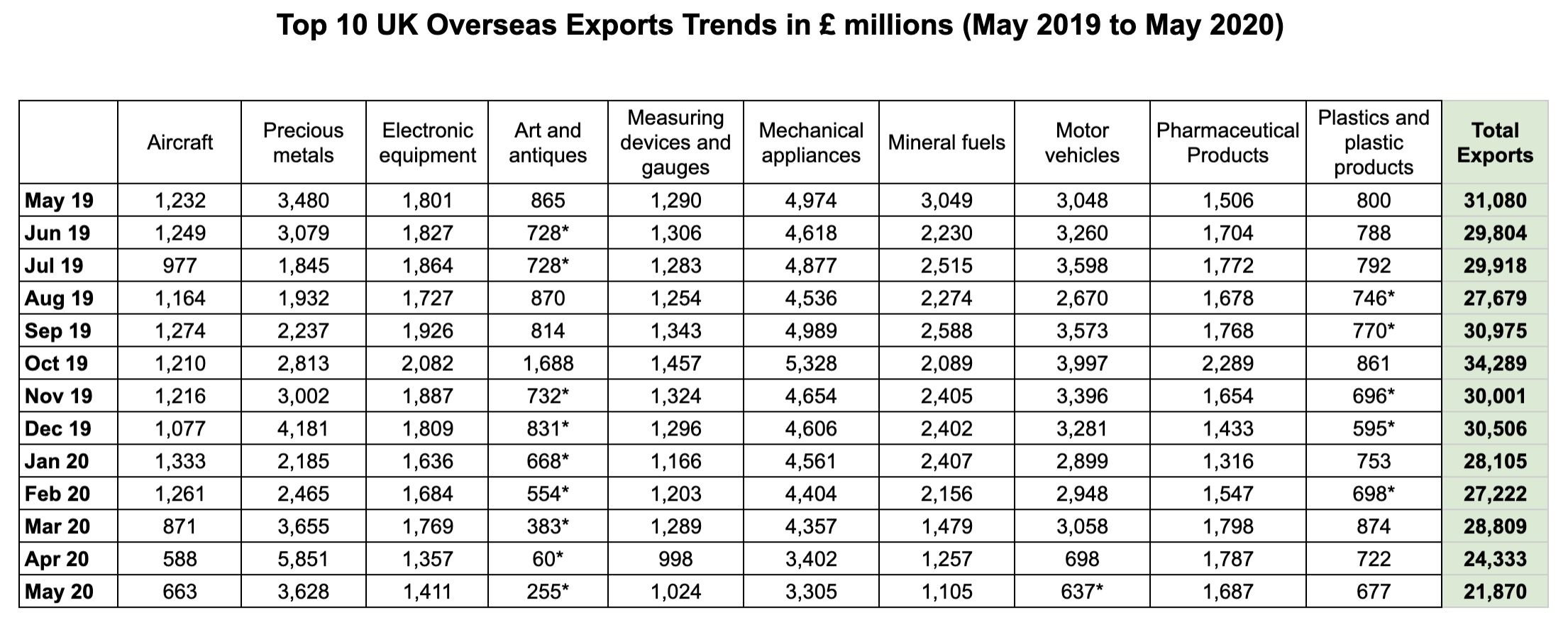
*Drops below top 10 commodities exported in the month.
Source: HM Revenue and Customs.
